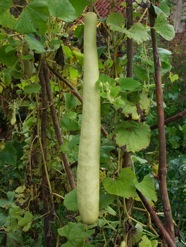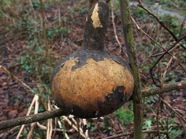
Gi-Go
GILO
A sort of eggplant -alternative , eaten a lot in Brasil. The plants produce edible fruits in different colours, orange, red, black, purple,....They require a lot of warmth, moisture and food to grow well. The fruits have a more bitter taste compared to eggplants, they can be used wherever eggplants are used.
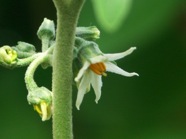
GINGER
Ginger (zingiber officinale) is surprisingly straightforward to grow over here, considering it’s a tropical plant. Off course you got to give it the necessary warmth and humidity , certainly for a good start.
I have only grown this in pots (and in the greenhouse) , it doesn’t seem to need lots of nutritients. Don’t expect a big harvest though, if the harvest is over three times the tuber you planted (tubers with nice-looking shoots can be found from time to time in organc shops), you’ll have a good result, in the wonderful summer of 2003, I had 5 times as much, which was really good...
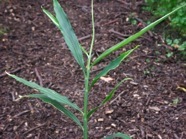
GINGER MYOGA
A nice ginger alternative and a hardy plant, myoga ginger is grown mainly for its edible flowers, these are produced near the surface. They taste like ginger, off course....Sometimes young shoots are eaten as well, again with a familiar ginger taste.
Myoga ginger (zingiber mioga) originates in Japan, and is therefore less demanding in warmth . I have grown it in a tub onto now, but I intend to plant it out next year, it should withstand some quite severe frosts. Growing is easy , just give it enough water (they are propagated by cutting little pieces of the roots).
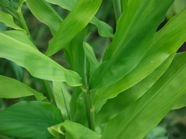
GOBO
This is derived from a native Eurasian plant, arctium lappa, or great burdock. Selections of this plant have been made in Japan, and are very popular over there.
The main use of gobo are the roots, they are mostly stir-fried or added to all kinds of sauces or mixed up with mashed potatoes.
The leaves are edible as well, as some sort of a spinach, and blanched leaves and stems make an excellent vegetable.
Gobo is simple to grow, it requires some space and they will grow to about 80 cms high in their first year. The plants will mount to seeds in their second year, these seeds are very annoying to some people, because they tend to stick to every bit of clothing or even long hair.
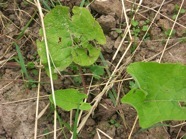
GOOD-KING HENRY
One of the survivors of the ancient vegetables. Good-king henry (chenopodium bonus-henricus) produces lots of leaves who are used in spinach-like preparations. I grew this many years ago, and I didn’t find it tasted well, other people absolutely adore it...
The flower shoots are eaten as well, but I never tried that (it seems to be the best part...) .
The plants grow in every soil, and have a tendency to be a bit invasive, so you’re warned!
GOURD
Gourds (lagenaria spp.) were traditionally used as containers for liquids, some have very weird shapes. Some varieties (mostly the ‘cucuzzi’ (lagenaria siceraria) species) are grown for their edible fruits, which are harvested very young , they are cooked and served with all kinds off additions (they can also be hollowed out , filled up and placed in the oven.
Now gourds aren’t easy to grow outside here (they will work fine in a greenhouse), they want lots of sun , water and food. give them a strong support, they can weigh a lot. And , if you grew them outside, you will probably have to dry them out inside, normally they don’t reach the dry stadium over here.


